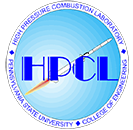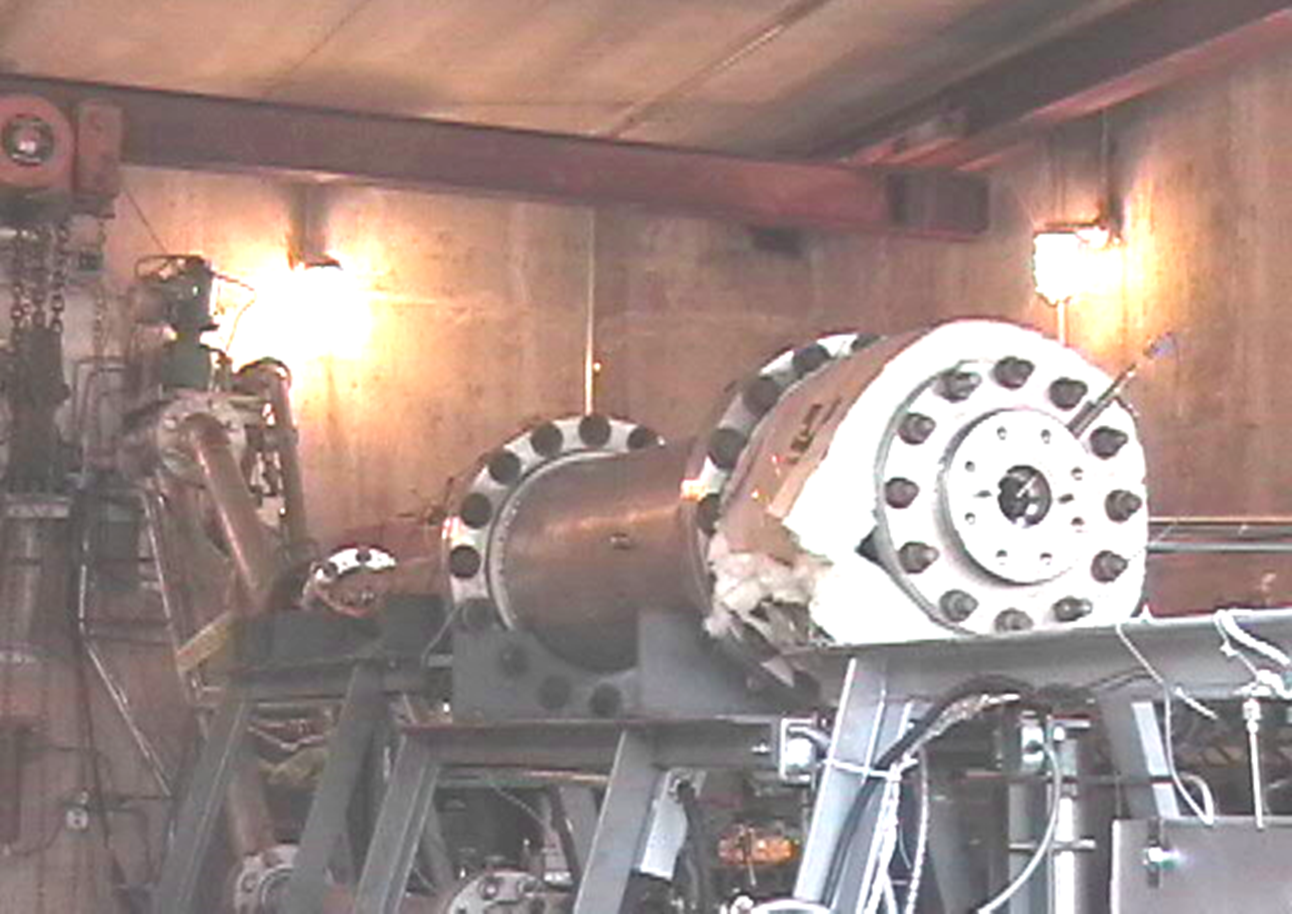High Pressure Combustion Lab
Dr. Richard Yetter, Director
104 Research Building East
University Park, PA 16802
Phone: (814) 863-6375
Email: ray8@psu.edu
Dr. Eric Boyer, Assistant Director
High Pressure Combustion Lab
University Park, PA 16802
Phone: (814) 863-2264
Email: jeb19@psu.edu

Facilities - Flow Systems
Blow-down Wind Tunnel
A high-enthalpy blow-down wind tunnel capable of subjecting solid fuel or solid propellant samples to convective heating is available at the HPCL. Test times on the order of seconds to minutes are available depending on test conditions. Air for the wind tunnel is supplied at up to 700 psi (4.9 MPa) from two large storage tanks (75 m3 in total). The flow of air (or gas mixture) into the wind tunnel is controlled by a pair of three-inch pneumatic ball valve that regulates the flow through either 2” or 4” gas delivery lines. Depending on the location of a block-out air can flow through a lower bypass or through an upper heated section. The temperature of the gas is then elevated by one of two heating configurations prior to the test section.
- The first option utilizes a propane/air vitiator. The vitiator separates the incoming air, reacting a portion with propane while also introducing make-up oxygen. The hot combustion flow then recombines with the unheated air to increase the average air temperature. Air at temperatures up to 1000 K then flows into a settling chamber, which contains perforated plates, screens, and a honeycomb for breaking-up the large-scale turbulent structures and flow straightening.
- In the second configuration, the vitiator heating element is removed and the air flows directly into the settling chamber. In this configuration the settling chamber flow straightening elements are replaced with a heater consisting of 424 copper tubes (~250 lbs.) bundled together in a 6-in diameter steel tube insulated on the external surface, allowing air to flow through both the inside and outside of the tubes. The copper tubes are heated pre-test to the desired temperature by four 1000-W tubular resistance heaters. Outlet air temperature is controllable from 293 to 900 K (67 to 1160 °F).
The selection of the heating method is dependent on the desired test condition. Using the vitiator, test times on the order of minutes, at high flow rates (8 kg/s), and with a steady temperature are realized but with "dirty air" (CO2 and H2O from the propane/air combustion). With the vitiator, this setup was used to simulate the combustion chamber conditions, static pressure range of 0.1 to 0.62 MPa, of a hypersonic vehicle at high altitudes. The maximum flowrate attainable at Mach 1.5 is 8 kg/s with a duration of four minutes at the highest pressure. Using the packed-bed heater, 3 kg/s (6.6 lb/s) of "clean" air for a short period (few seconds), with a gas temperature drop from the peak level of no more than 30 K (54 °F) during that time period are delivered to the test section. With either configuration, several highly instrumented (X-ray RTR, LDV, high-speed camera, pressure, and temperature) test sections have been utilized to examine solid fuel/propellant ignition and combustion as well as warm-gas flow structure experiments.

